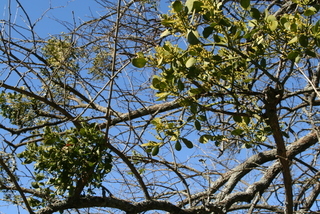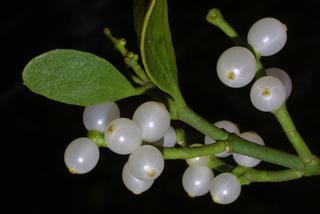Making Christmas More Fun!
Interactions & Nutrition
Definition: Parasitism- Depending on a host for fitness, whereas the host can live without the relationship. It only suffers if the parasite is present.
As
you may have guessed, being a parasite
means that you MUST interact with
another organism, or
 a parasitic
relationship would not exist. So knowing
this, we also know that Mistletoe is a
plant where interactions are key to its
survival. Phoradendron leucarpum
grows on a huge variety of different
trees, but it has been widely known to
grow well on many oak species.
a parasitic
relationship would not exist. So knowing
this, we also know that Mistletoe is a
plant where interactions are key to its
survival. Phoradendron leucarpum
grows on a huge variety of different
trees, but it has been widely known to
grow well on many oak species.
Different Interactions:
1) The first of many interactions which most Mistletoe goes through is the attachment of sticky seed to an unsuspecting bird or animal. The bird (or animal) then transports this seed to another tree, where it sticks to a branch.
2)
Mistletoe uses
haustorium as its primary means
of connecting to the host plants and the
water and nutrients within their xylem
and phloem. These root-like structures
usually develop early in the plants
life, growing
 into
the bark and diverting the transport
systems of the host-plant to
into
the bark and diverting the transport
systems of the host-plant to
themselves. To see more information about the Nutrition of Phoradendron leucarpum, click here! Sometimes, this diversion results in the death of the branch, but this only happens when almost all major xylem and phloem vessels are cut off. Often, these haustoria develop large galls, or lumpy deformations which are visible on the tree branch.
Hemi-Parasitic- Being parasitic, but also carrying out photosynthesis and creating its own sugars; like every other green plant.
Obligate Parasite- Needing the parasitic host for survival, for instance; if the host tree dies, so does the Mistletoe which grows on it.
Interactions with People:
Warning! American Mistletoe is poisonous to humans! Although many people love to hang mistletoe around Christmas time, this plant can cause you to become very ill if ingested.
To view how Mistletoe reproduces, click here!
Copyright © 2007, Design by: Sunlight webdesign